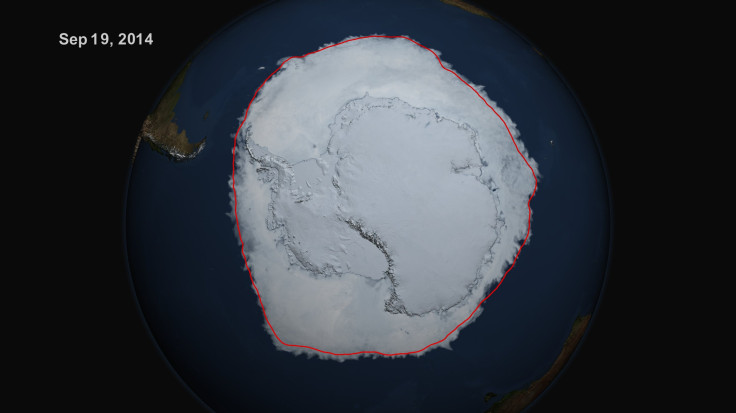Antarctic Sea Ice Cover At All-Time High As Arctic Ice Continues To Melt

Even as ice cover in the Arctic continued to shrink rapidly in September, the other end of the globe witnessed record high sea-ice levels, according to data released by the National Snow and Ice Data Center, or NSIDC. Climate change, which has caused global temperatures to rise, could be responsible for both the trends.
Antarctic sea ice hit its annual winter maximum on Sept. 22, covering a record area of 7.76 million square miles -- 595,000 square miles above the 1981 to 2010 average maximum extent -- breaking consecutive records set in 2012 and 2013.
“Nearly every day has been a record for that day in the satellite record,” Ted Scambos, a senior scientist at NSIDC, told Climate Central.
The extent of ice cover in the Arctic, meanwhile, stood at an average of 2.04 million square miles in September -- 479,000 square miles below the 1981 to 2010 average extent -- making it the sixth-lowest ice cover since satellite records began in 1979.
While the rapid reduction of Arctic sea-ice cover, which has declined at a rate of 4.52 percent a decade, can be linked directly to an increase in global temperatures, the cause of growth of Antarctic ice is not yet clear, according to media reports. However, the record high levels were in line with a trend that showed a consistent increase in Antarctic sea ice cover over the last three years, according to the NSIDC statement.
Walt Meier, a research scientist at NASA’s Goddard Space Flight Center, reportedly said that a warming climate could explain the increase in ice cover in the Antarctic as changed weather patterns -- caused by an increase in global temperature -- brings cooler air to some areas, including the South Pole.
“The winds really play a big role…they whip around the continent, constantly pushing the thin ice. And if they change direction or get stronger in a more northward direction, they push the ice further and grow the extent,” Meier reportedly said. “Part of it is just the geography and geometry. With no northern barrier around the whole perimeter of the ice, the ice can easily expand if conditions are favorable.”
Claire Parkinson, a senior scientist at Goddard, reportedly said that the changes in the sea-ice cover were a “microcosm of global climate change.”
“The planet as a whole is doing what was expected in terms of warming. Sea ice as a whole is decreasing as expected, but just like with global warming, not every location with sea ice will have a downward trend in ice extent,” Parkinson said, according to media reports.
© Copyright IBTimes 2024. All rights reserved.






















